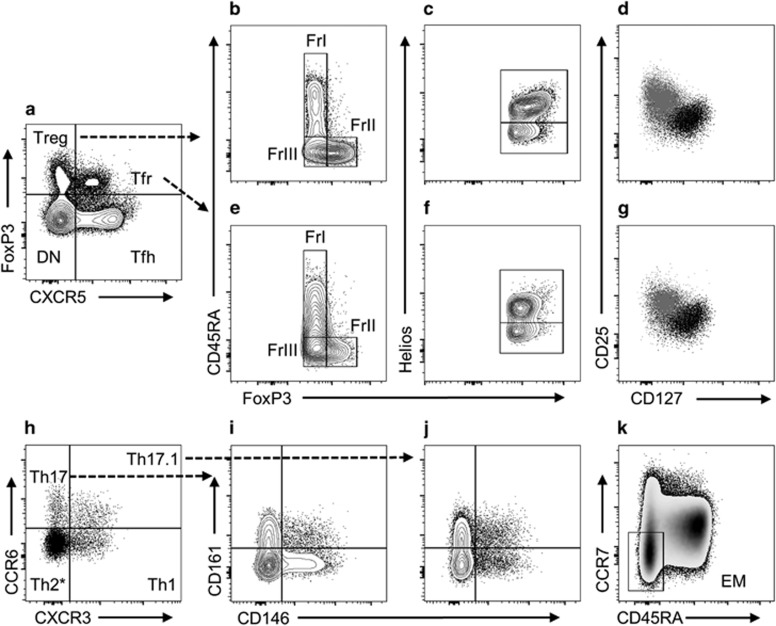Figure 1.
Representative T-cell gating plots and subsets. Following doublet exclusion PBMCs were gated for CD3+CD4+ T cells (not shown), before being separated into four core subsets (a): Treg, Tfr, Tfh and CXCR5−FoxP3− (designated ‘DN’ for brevity)). Treg (b) and Tfr (e) were comprised of ‘resting’ FrI (CD45RA+FoxP3lo), ‘activated’ FrII (CD45RA−FoxP3hi) and ‘cytokine-producing’ FrIII (CD45RA−FoxP3lo) fractions. Treg (c) and Tfr (f) contained both Helios+ and Helios− subsets. The majority of Treg (d) and Tfr (g), contrasted here (grey) against CD4+FoxP3− T cells (black), fit the conventional CD25+CD127lo Treg cell description. Conventional and follicular regulatory fractions and helper populations were analysed for their composition of Th1-like (CCR6−CXCR3+), Th2-like* (CCR6−CXCR3−), Th17-like (CCR6+CXCR3−) and Th17.1-like (CCR6+CXCR3+) subsets (h). Th17-like (i) and Th17.1-like (j) subsets were further examined for CD146 and CD161 expression. CD45RA−CCR7− effector memory (EM) cells were gated within conventional and follicular helper subsets (k). *Analysis of Th2-like cells was confined to CCR6−CXCR3− EM cells.

